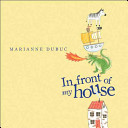
In 1679, a French ship called the Griffon left Green Bay on Lake Michigan, bound for Niagara with a cargo of furs. Neither the Griffon or the five-man crew was ever seen again. Though the Griffon’s fate remains a mystery, its disappearance was probably the result of the first shipwreck on a Great Lake. Since then, more than six thousand vessels, large and small, have met tragic ends on the Great Lakes. For many years, saltwater mariners scoffed at the freshwater sailors of the Great Lakes, “puddles” compared to the vast oceans. But those who actually worked on the Great Lakes ships knew differently. Shoals and reefs, uncharted rocks, and sandbars could snare a ship or rip open a hull. Unpredictable winds could capsize a vessel at any moment. A ship caught in a storm had much less room to maneuver than did one at sea. The wreckage of ships and the bones of the people who sail them litter the bottoms of the five lakes: Ontario, Erie, Huron, Michigan, and Superior. Ed Butts has gathered stories and lake lore in this fascinating, frightening volume. For anyone living on the shores of the Great Lakes, these tales will inspire a new interest and respect for their storied past.









